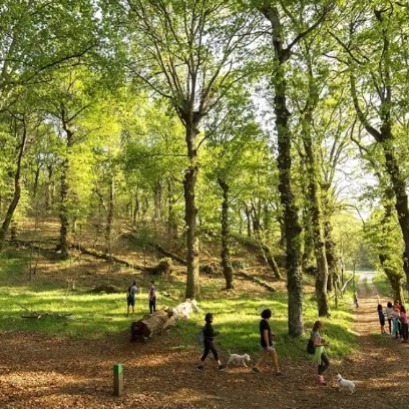
Distinguished pieces of sawn teak wood
Teak wood (Tectona grandis L.f.) is native to Southeast Asia, India, Cambodia, Laos and Vietnam. It also has other areas of provenance where it has been widely planted: tropical regions of West Africa and tropical Central America.
It is a species that stands out for its magnificent characteristics of natural durability, in addition to having a good dimensional stability. Teak wood has an antiseptic resin that makes it resistant to the attack of various organisms, such as termites or fungi.
To its good stability, it must add its high resistance to water, cracking or rupture, because it has a natural oil that makes it impermeable, which makes it a widely used wood in shipbuilding. It is also an optimal wood for outdoor, being able to adapt to extreme weather conditions.
The teak wood is intense golden brown, normally, but it has a wide range that varies from reddish to very pale tones. It also admits treatments or paintings to change its color without losing its appearance
These properties make teak wood one of the best known tropical woods on the market and, sometimes, that is reflected in its price. All this, added to its good outdoor properties and its durability makes it worthwhile for certain products, the investment in using teak wood.
One of the uses of teak wood is directly sawn, but also as sheet metal, panels, carts, wheels, carpentry and joinery, manufacture of canoes and light boats, furniture and interior finishes.
Sawn teak wood can be used directly in the manufacture of distinguished doors or tables or as a decorative element, for its natural beauty.

IT MAY INTEREST YOU
 This is the Galician forest where the highest chestnuts in Europe grow
This is the Galician forest where the highest chestnuts in Europe grow
The place has centenary chestnut trees that reach 30 meters high and keeps in its shadows the memory of Emilia Pardo BazŠn
 Spain | In Navarra they built the longest industrialized pedestrian walkway in the world on the Arakil River
Spain | In Navarra they built the longest industrialized pedestrian walkway in the world on the Arakil River
The Navarra Foral Community celebrated a new achievement of sustainable engineering with the installation of the longest wood pedestrian walkway in the world. With a length of 86.8 meters, the structure connects the river walk between the towns of Ibero and Etxauri, on the Arakil River, without intermediate pillars and with an innovative arc structure.
 Combilift Receives its 3rd Red Dot Win with its New 7-ton Electric Multidirectional Counterbalance Forklift
Combilift Receives its 3rd Red Dot Win with its New 7-ton Electric Multidirectional Counterbalance Forklift
The recently launched Combi-CB70E earns global recognition for its ergonomic design, performance, and sustainability at the prestigious Red Dot Design Awards 2025 Essen, Germany ? July 2025 ? Irish-based manufacturer Combilift, a global leader in multi-directional and customised handling solutions, has been awarded the prestigious Red Dot Award for Product Design 2025 for its Combi-CB70E, high-capacity, electric-powered multidirectional forklift, developed to meet the needs of heavy-duty, long-load handling in more sustainable ways.





















